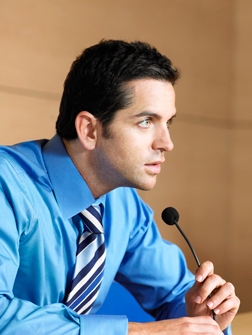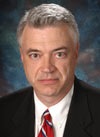 Wisconsin Lawyer
Wisconsin Lawyer
Vol. 82, No. 5, May 2009

 isconsin lawyers are not using lay opinion evidence at trial even though witnesses may testify to their direct knowledge in the form of opinions to the jury. Such testimony is permitted even if that testimony encompasses the ultimate issue of the case. Lawyers who fear that lay opinion evidence will call forth objections, such as “invading the province of the jury,” may depend on other types of evidence to present testimony. They do not need to. This article gives a fresh look at lay opinion evidence and its effectiveness in trial advocacy to help Wisconsin trial attorneys use, and courts more readily accept, this potential type of testimony as the legislature intended.
isconsin lawyers are not using lay opinion evidence at trial even though witnesses may testify to their direct knowledge in the form of opinions to the jury. Such testimony is permitted even if that testimony encompasses the ultimate issue of the case. Lawyers who fear that lay opinion evidence will call forth objections, such as “invading the province of the jury,” may depend on other types of evidence to present testimony. They do not need to. This article gives a fresh look at lay opinion evidence and its effectiveness in trial advocacy to help Wisconsin trial attorneys use, and courts more readily accept, this potential type of testimony as the legislature intended.
Background
Any testifying witness, whether in federal or state court, in a criminal or civil action, gives either lay or expert testimony. An expert who is qualified by “knowledge, skill, experience, training or education” may appear and testify if that specialized knowledge will help the trier of fact in understanding or determining an issue.1 A lay (nonexpert) witness testifies because that witness has direct knowledge of something that is now in dispute; that testimony can be in the form of an opinion or inference if that opinion is rationally based, helpful for understanding, and relevant.2 The entire purpose of this “lay opinion rule,” governed by Wis. Stat. section 907.01 (part of Wisconsin’s Rules of Evidence), is to clarify that any witness, including a nonexpert, can testify in the form of an opinion or inference.3 Thus, a lay witness may give an opinion based just on his or her perception of such things as speed,4 time,5 bloodstains,6 intoxication,7 sanity,8 the appearance of people or conditions,9 identity,10 mental condition,11 the manner of conduct, lightness, darkness, sound, size, weight, and distance – an endless number of items that cannot be described factually in words apart from inferences.12 Wisconsin statutes and case law permit a litigator, armed with lay opinion evidence, to examine a witness about direct knowledge and request conclusions based on that knowledge.
Wisconsin lawyers, however, are not using lay opinion evidence. (The jury instruction for lay evidence, Jury Instruction 201, is seldom included in the standard criminal jury packet.) Many attorneys do not use lay opinion evidence, perhaps because they fear that the court will reject this type of evidence because of objections of “speculation,” “opinion,” or “invading the province of the jury.” Indeed, frustrated prosecutors are routinely denied effective direct examinations when they ask witnesses to draw conclusions from what they have perceived. This article explores the history of opinion evidence, and how that evidence became grafted onto the objection of “invading the province of the jury.”
History of Lay Opinion Evidence
As early as 1766, Lord Mansfield, chief justice of the King’s Bench, and major architect of Anglo-American common law, institutionalized the traditional criticism of opinion evidence when he announced in Carter v. Boehm,13 “it is mere opinion and not evidence.” It should be noted that Lord Mansfield was attacking opinion evidence because the early English definition of opinion meant “lack of grounds” or “notion,”14 and his famous statement “it is mere opinion and not evidence” was understood to condemn testimony that was not based on personal knowledge.15 From medieval law to early jury trials to modern litigation, the one constant theme was that lay witnesses must have personal knowledge of matters about which they testify.
Even as lay opinion evidence was theoretically being barred, the entire definition of opinion was changing. Instead of notion or guess, opinion was becoming synonymous with inference or conclusion.16 Moreover, judges trying to distinguish between fact and opinion were meeting with disaster as they found the basic assumption underlying the supposed distinction between the two an illusion.17 Prof. John Henry Wigmore complained that, “in all the law of evidence, there is no instance which the use of a mere catchword has caused so much error of principle and vice of policy: error of principle because the distinction between ‘opinion’ and ‘fact’.”18

Thomas J. Coaty, John Marshall 1992, is a Brown County assistant district attorney. He is a member of the Wisconsin Crime Victims Council and a permanent instructor at the Department of Justice Criminal Investigation School. He thanks the men and women of the Brown County District Attorney’s office for their unselfish devotion and all Wisconsin assistant district attorneys and their staffs because we are, truly, “ourselves alone.”
Because of the impossibility of separating fact from opinion, the law began to change. In 1874, the Wisconsin Supreme Court held in Burnham v. Mitchell19 that a wife could testify, even though she was not an expert, that her husband did not have the mental capacity to enter into a contract. The wife testified to what she did and saw in the care of her husband and her logical conclusions; the court accepted those conclusions as the basis for its determination that the husband did not have the ability to enter into a contract.
Finally, by 1972, in Bennett v. State,20 a vehicular homicide case, the Wisconsin Supreme Court allowed the testimony of a witness that the defendant was traveling an estimated 100 miles per hour before the crash. The court reasoned that the witness was qualified to offer his opinion, because of his experience as a driver and because his location allowed him to observe the vehicles before the crash. The proposition that lay witnesses may testify only to fact and not opinion was rejected in this case.21
Practice and the Province of the Jury
Lay opinion is a powerful, but underused, evidentiary tool. Just like lay opinion evidence on handwriting or voice identification, the testimony should be accepted if proper foundation is offered:22
1) The witness has personally seen, heard, or otherwise observed something.
2) The witness’s opinion or inference is “rationally based” on that observation.
3) The witness’s opinion or inference would help the fact finder understand the testimony or decide a disputed fact.
Appropriate objections to a witness’s opinion testimony are ones based on relevance,23 prejudice as compared to probativeness,24 or direct knowledge.25 Furthermore, a lay witness, unlike an expert, may not answer a hypothetical question26 or offer opinion evidence on inadmissible hearsay27 (because the lay witness has no direct knowledge of the hearsay evidence).
Wisconsin law, however, does not bar lay opinion evidence on the ground that such evidence “invades the province of the jury.” Wigmore noted that the opinion of the witness could not “invade the province of the jury” because ultimately, the jury decides whether to believe the witness and this was just an attempt to justify the rule (against opinion evidence).28 Moreover, Wisconsin law recognizes that “lay opinion can and commonly does embrace ultimate issues of fact,”29 because, for example, witnesses routinely identify defendants in criminal trials. “The province of the jury” should be interpreted as the unique power given to jurors to judge witnesses’credibility,30 and nothing should interfere with the jury’s function as a “lie-detector” in the courtroom.31
Thus, a civil litigator, armed with the proper foundation, should be able to ask the simple and ultimate question: “Who do you think caused the accident?” In criminal law, a similar question would be, “What do you think the defendant was doing?” Objections such as “speculation,” “opinion,” or “this question invades the province of the jury” should not be sustained as long as the witness has direct knowledge that is relevant and not prejudicial.
In the 2004 case State v. Johnson,32 the Wisconsin Supreme Court ruled that defendants could be asked their opinion on other witnesses’ testimony as long as the witnesses claimed to have witnessed the same event. (The supreme court also looked to Wis. Stat. section 906.07: The credibility of any witness can be attacked by any party.) Thus, a prosecutor can ask a defendant if other witnesses the defendant has heard were lying or mistaken, in reliance on the court’s holding in Johnson that the jury in its role of lie detector could monitor the demeanor and quality of answers the defendant gives on why his or her testimony of a shared perceived event is so different from other witnesses’ testimony.
Conclusion
A lay witness may testify to anything the witness has direct knowledge of and may give a rationally based opinion on that knowledge to the jury. A lay witness’s opinion may go to the ultimate issues of the case, and such a witness can testify to anything that an expert witness testifies to except hypothetical questions and impermissible hearsay. In addition, the province of the jury is an exclusive province wherein its members judge the credibility of witnesses and determine the weight that testimony deserves, but province of the jury is not an appropriate objection to lay evidence.
Endnotes
Wisconsin Lawyer
